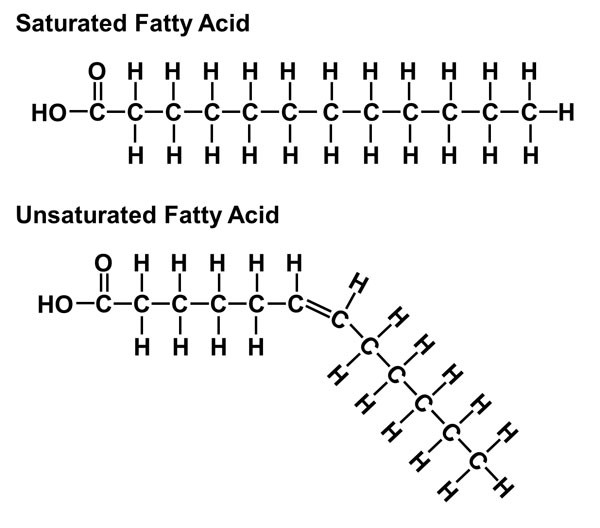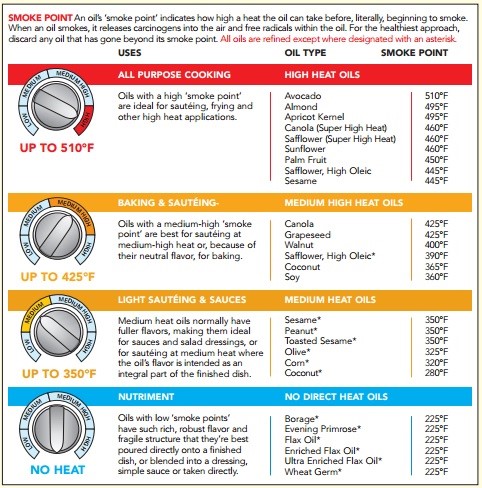Over the past decade, Americans have traded in saturated fat for their heart healthy counterpart, unsaturated fats. At its core, this is a giant step towards better health. However, when not stored correctly and if heated past their smoke point, unsaturated fats can actually become even more dangerous to your health.
In order to understand this, let’s take a quick step back to High School chemistry (I promise this will be quick!). The difference between a saturated fat and unsaturated is the amount of hydrogen on the fatty acid chain. As you can see in the image, saturated fats are fully “saturated” with hydrogen. This makes the fat more stable and it’s the reason why it is typically solid at room temperature. Unsaturated fats have some double bonds making the fat a bit more fragile and fluid. Unsaturated fats are typically liquid at room temperature.
Although the fluidity of the unsaturated fat makes it flexible when passing through your body, it is very fragile and susceptible to oxidation and can quickly become rancid. From a taste standpoint, rancid oils are as appetizing as they sound. From a health standpoint, rancid oils can speed up cellular aging, increase inflammation and are potentially carcinogenic. (End of the chemistry lesson!)
In order to protect the oils and make sure they are improving rather than damaging your health, there are two main factors to consider – storage and smoke point.
Storage of Cooking Oils
Unsaturated oils are broken down by light and heat and typically have a much shorter shelf life than saturated oils. Here are the most important things to consider when storing your oils:
- Choose oils in a tinted bottle and store in a dark cabinet to avoid exposure to light.
- Store away from the stove in a cooler area of your kitchen. Polyunsaturated oils (such as flaxseed) are best stored in the refrigerator.
- Check the expiration date and make sure to get rid of the oil as soon as it’s expired.
- Avoid huge bulk versions of oil. I know that it seems cheaper but the oil will most likely go rancid before you use it and you might be tempted to keep it rather than throwing it away.
Smoke Point of Cooking Oils
The smoke point of cooking oil is the temperature at which the oil will start to smoke on the stove-top. This signifies that it has been heated past its safe temperature, is chemically breaking down and becoming rancid. Here is a table with the smoke points for the most popular cooking oils as well as the types of cooking they are best used for.
(image from: www.spectrumorganics.com)
Healthy oils can be both a way to pack in nutrients and flavor to your meals. Make sure you are both storing and cooking with them correctly to get the most health benefits and protect both you and your family.
This article was written by Tara Coleman and first appeared on www.totalgymdirect.com.


